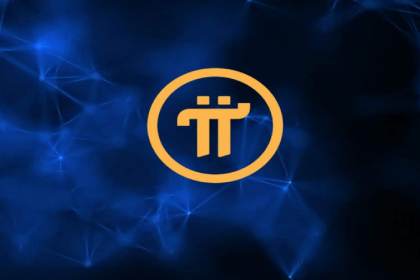Since the advent of blockchain, this transformative technology has impacted many different industries, from transportation and insurance to supply chain. However, to further expand the use of this technology, we need only one thing: to have security, scalability, decentralization at the same time. Blockchain has all three of them; But not at the same time. For this reason, second layer solutions, such as the second layer network of Coinbase, have been created.
In this article, which we have written with the help of an article from the Coin Gecko website, we will first talk about the basic mechanism of the Base network and its brief history. Then we will examine its key features and how it differentiates itself from similar solutions. If you are curious to know how BIS wants to solve the triple problems of blockchains, stay with us.
What is the second layer network of Coinbase?
Base is a second layer network that works on the Ethereum blockchain. In addition to solving the triple block problems of blockchains, the Base project design aims to provide a cost-effective and easy way for developers to build decentralized applications (DApps) that work with the Coinbase ecosystem.
Layer 2 networks are off-chain networks that sit alongside their underlying blockchain. These networks follow the same basic structure as the main blockchain. For example, Ethereum’s second layer blockchains, just like Ethereum itself, can manage smart contracts and their security is provided by Ethereum. The advantage of these blockchains is that they have lower transaction fees and are more scalable than the original blockchain.
History of the second layer network of Coinbase
Base is designed and published by the American Coinbase exchange. Base test network was launched on February 23, 2023; But it was developing long before that. The team behind the project explained that they released Base because it would be a low-cost and convenient way for developers of decentralized applications. Their goal was to encourage developers to build more crypto products and facilitate people’s access to Coinbase services.
One of the reasons for the popularity and increasing trust of people in the base project is the company behind it. Coinbase is currently one of the largest cryptocurrency exchanges in the United States. The Coinbase trading platform, which was launched in 2012, offers services such as buying, selling, trading and storing digital currencies.
The platform also supports other products such as stablecoins, and those business owners who want to accept digital currency payments can get a digital currency debit card and API from Coinbase. However, Iranian users cannot use any of these services due to extensive sanctions.
Coinbase has joined this Ethereum second layer network to develop the OP Stack, which is an open source developer toolkit used by Optimism.
How does bass work?
Coinbase’s Layer 2 network uses Layer 2 technology to save developers costs while providing all the features of Ethereum. In fact, Base is a kind of secondary blockchain that runs parallel to the Ethereum main chain.
This network processes transactions and sends them to Ethereum’s first layer after they are finalized. Transaction data is recorded in the main blockchain ledger, Ethereum, which means it will be part of the main chain.
This network also uses the so-called roll-up mechanism. Rollup is an amazing technology that collects and aggregates data from hundreds of transactions into a single transaction that is sent to the main chain.
All those transactions had to pay a separate fee to be sent to Ethereum; But with rollup, hundreds of transactions will be sent to Ethereum at once and thus, will pay only one fee. This fee is split between all those transactions, which is significantly less than sending them individually.
The network architecture of the second layer of Coinbase
As we said, the construction of the base network has been done using OP Stack, and therefore, the base is also supposed to be a part of the Superchain network. Superchain is a network of chains that are built using OP Stack; That is, all these chains inherit the security of their underlying blockchain and can have a common communication layer with each other. In addition to facilitating base deployment, the OP Stack system provides a higher level of scalability and interoperability.
With Coinbase joining Optimism to develop the OP Stack, the two teams are working together to design and build a protocol that can organize multiple second-layer blockchains sequentially, while providing interoperability and composability between the OP Stack. .
Given that Base is a second-layer blockchain, it can benefit from the upcoming EIP-4844 proposal that will be included in Ethereum’s Dencun upgrade, and Coinbase itself contributed to its development. The EIP-4844 proposal will greatly reduce the cost of data access by storing data in a new format called blobs instead of the current structure called calldata.
If second-layer blockchains use this scheme, users will also benefit from reduced costs, which means an overall reduction in transaction costs throughout the second-layer ecosystem.
What is the purpose of bass?
The Base project has several different goals. On the face of it, the main focus of this project is to provide secure and easy access to Ethereum’s second layer network. BASE aims to solve some of the problems faced by other layer 2 networks. The network has the open source software OP Stack, which is publicly available, so users can fork the chain and create their own chain.
Open source OP Stack is a developer favorite and a fully modular system that can be customized. The system is also interoperable and is designed to interact with other chains while being completely decentralized. An absolutely valuable tool that every developer needs.
A more important motivation behind BASE is that, unlike many other Ethereum second-tier chains, BASE will have a direct connection to Coinbase products. For example, if a developer creates a blockchain-based game, they can use this system to help their users easily cash out their tokens on Coinbase.
Although this feature is not applicable for Iranian users, however, it helps Coinbase to maintain its popularity; Because digital currency industry users are changing from traditional investors to Web 3.0 fans.
Capabilities and features of the second layer network of Coinbase
Coinbase’s second-layer network is not just a second-layer solution for scalability, but is intended to provide developers with many other useful features and capabilities. Some of the capabilities and features of BIS are:
1. Coinbase second layer network nodes
BASE developers can run their own BASE node if they wish. However, if they don’t want to accept the cost and challenges of a single node, they can use third-party node services.
Base offers access to many third-party node providers. Some of these node providers include Ankr, Blast, QuickNode, Unifra, and several other popular services.
2. Bridges
Bridges are very important in the second layer. As the name suggests, a bridge means a bridge and helps transfer data from one blockchain to another. Current Base bridges allow you to send Ether (ETH) from the first layer to the second layer, which makes it easy for projects in the early stages of development to build a base ecosystem fund or transfer tokens to other chains.
3. Oracles
Blockchain oracles are very useful tools that allow people to add real-world data to the network as such. Optimism’s OP Stack system currently supports price oracles. Price oracles such as Pyth Network and Chainlink check the prices of popular cryptocurrencies and send their data to the database for developers and users to access.
Also, developers can use the Oracle tool to set up smart contracts so that those contracts will perform a specific action when the predetermined prices are reached. As you can see, oracles can easily add automation to the Coinbase 2nd layer network.
4. Toolchains
To make it as easy as possible for developers, Base includes several toolchains in its network. Toolchains make it much easier to develop early-stage projects and give developers a quick way to do complex tasks without having to code each step one by one.
Current toolchains supported by Base include Foundry, Hardhat, Thirdweb CLI, and Truffle. These toolchains help with various things from developing smart contracts to debugging them.
5. Block explorer
Block probes make it much easier to filter the large amount of data in the database. Instead of reading reams of raw data, developers can use a simple and convenient interface to explore transaction information, smart contract source code, and more. Base Network’s OP Stack system is fully compatible with explorers such as Blockscout, Etherscan and DexGuru.
6. Network facets
Development in the second layer network of Coinbase is low-cost; But it is not free. Developers still need a base ecosystem fund to pay transactions. For this reason, this network provides faucets for developers to add ether to the base network and use it to pay for gas and other fees.
Coinbase has an integrated Fast in its wallet, which provides secure access to ether and the possibility of withdrawing it directly from the base. This system also supports third-party fasts such as Bware Labs and Quicknode.
7. Securing Ethereum
The second layer network of Coinbase inherits its security from Ethereum. Since Ethereum migrated to Proof of Stake (PoS), it has a relatively stronger security layer among all chains. This security is expected to become even stronger with the continued increase in staked Ether since the Marj upgrade and its subsequent Shanghai upgrade.
8. Strong support from Coinbase
Decentralized applications built on Base can access the collection of products and tools available on Coinbase. Apart from that, the possibility of accessing the user base of Coinbase, which is almost more than 100 million users, is available for these programs.
Since it will likely be convenient for users to switch between Coinbase and Base, decentralized applications on Base may benefit from Coinbase’s strong liquidity and support.
9. Low costs
Based on 90-day estimates, Base fees are roughly 10x lower than Ethereum.
The difference between Base and Ethereum
Base is intentionally designed to resemble Ethereum as much as possible. Base developers built it on top of the OP Stack, so every product design on Base is the same as on Ethereum.
The main difference between Base and Ethereum is lower transaction fees and shorter processing time for blocks. Of course, there are more minor differences; For example, some operational codes in Base are modified and, of course, Base does not support some uncommon networks, unlike Ethereum.
The impact of the base network on Ethereum
Layer 2 solutions like Base have a very positive impact on Ethereum. Since these networks reduce the network density in Ethereum’s layer 1, users don’t have to deal with huge transaction fees and slow down transactions every time a developer wants to test a new product. These cases attract the positive attention of the crypto space to Ethereum.
By helping developers build decentralized applications that run on the Ethereum network, Base will help solidify Ethereum’s position as the go-to network for designing crypto products in the Web 3.0 space.
Comparison of Bis with Arbitrum and Poligan
It is true that Base is a new second layer solution, but it is not the first project to offer this concept. There are some other networks that aim to provide an affordable and easy way for developers to work on Ethereum.
Polygon is a popular blockchain network that provides some layer-2 scaling and roll-up mechanisms. However, the Polygon network is basically not considered as a second layer system like Base. Polygon is a sidechain that is compatible with Ethereum, but uses a different consensus algorithm.
Arbitrum is another popular option that runs on Ethereum’s second layer network just like Base. However, it does not use a system that is compatible with the Ethereum Virtual Machine (EVM) to process its transactions, and its transaction speed is somewhat lower than other options on the market.
Base layer 2 network roadmap
Base has done a lot since launching its test network in February 2023. Almost all of its initial roadmap criteria have been met, including security enhancements, infrastructure reviews, platform upgrades and extensive audits. The Base Mainnet was launched to developers in July 2023 and to the public on August 9, 2023.
However, since launch, the base is a zero-stage rollup; It means that all the transactions categorized in it are done like that. Such a mechanism for sending new state roots is without fraud proof or validity proof mechanism. So the base team plans to upgrade it to stage 1, which has higher levels of decentralization and trustlessness. This step includes the following:
- Setting up at least one error proofer for the OP stack, which will ensure the security of the base network and the main network of Optimism with the help of validators to identify and deal with errors.
- Launching a version of Superchain that can properly order transaction processing for Basenets, Optimism, and any other OP Stack rollups, thus protecting the rights of every user participating in these ecosystems.
- Advancing Base Networks and Optimism to Phase 2 rollups, with higher levels of decentralization and security on par with Ethereum.
Will it have a native base token?
According to Coinbase’s announcement, the company currently has no plans to create a new native token for the Base network. This system is simply implemented with standard Ethereum tokens. Coinbase notes to watch out for scammers trying to sell you Base tokens. If this exchange intends to change its path and wants to create a new native token for Base, it will definitely notify users and developers in an official way.
The future of the second layer network of Coinbase
There will be several potential future opportunities and challenges for Coinbase’s second layer network, which we will explore below.
First, the launch of Base means that Coinbase is betting on Web 3.0 and the widespread adoption of the second layer, knowing that this path will be profitable in the future. Coinbase is one of the main contributors to the OP stack and they are implementing a common roadmap with optimism. This could send millions of new users through the base to decentralized finance or DeFi applications.
The launch of Base is likely to have a significant impact on Coinbase’s finances. The implementation of the Base network in the initial stages will impose certain costs on Coinbase. However, rollups are usually profitable; Because users pay fees to operators.
Base has also optimistically mentioned shared revenue, which will dwarf the revenue that Coinbase could collect on its own. However, this partnership is worth it; Because it leads to a significant and optimistic increase in the volume of base transactions. Overall, this additional revenue stream will benefit Coinbase; Even if it is small at first.
Base legislative problems
However, Coinbase has regulatory concerns from regulatory bodies and it is unlikely that Base will be able to launch its native token with this uncertain situation.
Their official statement on Twitter reads:
Liquidity is not expected to be a problem. In the same way that Arbitrum used a possible token airdrop, Coinbase may find a way to launch a token to attract users to the base network. Furthermore, the lack of regulatory transparency is reason enough for Coinbase to stay away from anything that would later be labeled as a security problem.
The base can be a permission-based rollup that requires users to complete the Coinbase authentication process before entering the base so that sanctioned entities cannot access it. In general, before bass can make an impact in the DFi space, it has to overcome significant obstacles.
Coinbase’s goal in providing base is not to compete with other exchanges such as Binance; Rather, it is more focused on decentralization and greater adoption of Ethereum through its scaling solutions. Base can add efficient tools to the decentralized finance space and more importantly, encourage users new to Coinbase to create attractive applications on DeFi protocols.
Frequently asked questions
Base is a second layer solution on Ethereum, designed and published by the American exchange Coinbase.
Base aims to help solve the triple problems of blockchains and, in addition, to facilitate the creation of decentralized applications for developers.
Base uses the Optimism rollup technology and is one of the main developers of the OP stack system in Optimism, and they are working together to create an interoperable protocol.
Some of the advantages of Base include low transaction fees, use of Ethereum security, and strong support from the Coinbase exchange.
no Base has not yet introduced a native token, and any purchase or sale of a token under the name Base network native token is a fraud.
RCO NEWS


















